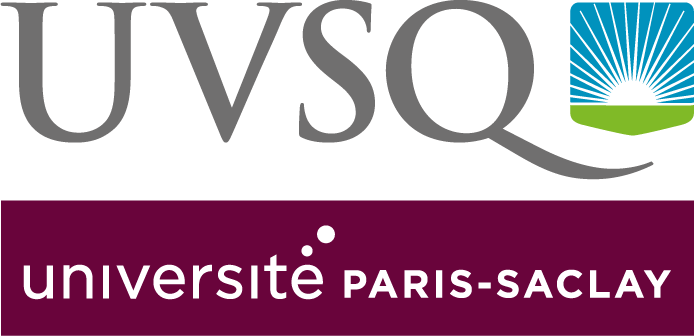Vous êtes ici : UVSQ RechercheDoctorat
- Partager cette page :
- Version PDF
« L'urbanisation de l'est de la Chine: entre mégalopolisation et métropolisation » par Haoyang LIU
Discipline : Sciences de gestion, Laboratoire : Laboratoire de recherche en Management - LAREQUOI
Résumé
La Chine est en processus d’urbanisation accélérée. Le Bureau national des Statistiques a rapporté une population de 1,3 milliard à la fin de l’année 2010, au moins la moitié d’entre eux vivent dans la zone urbaine. L’urbanisation chinoise depuis 1949 montre un modèle spécifique par l’héritage historique de l’économie planifiée centralisée. Après la transition économique de 1978, le système de carnets de résidence, le hukou, qui maintient la population paysanne dans les zones rurales est progressivement assoupli afin de permettre, sans changer le statut, de mobiliser la main-d’œuvre rurale pour servir le gigantesque chantier de l’agglomération urbaine. Le mouvement a pris son vrai départ en 1990. La Chine est entrée dans une nouvelle étape urbaine : celle de la mégalopolisation. L’objet de cette thèse est de comprendre, d’analyser, au travers de la nature et de l’évolution des principales mégalopoles chinoises, la spécificité du modèle urbanistique chinois, en lieu avec les spécificités institutionnels et les politiques publiques, et d’éclairer toute la diversité des situations réelles dans le but de favoriser l’urbanisation et le développement économique chinois plus stable et durable. Nous cherchons à expliquer l’urbanisation chinoise par les économies d’agglomération, plus particulièrement à examiner les caractéristiques de la croissance urbaine au cours de cette période récente de forte urbanisation afin de comprendre pourquoi la mégalopolisation est emporté sur la métropolisation en Chine. Au cours de cette réflexion, à la fois théorique et empirique, nous nous sommes demandé dans quelle mesure la stratégie d’urbanisation chinoise pouvais faire l’objet de comparaison avec les autres pays émergents, notamment avec l’Inde qui est d’autant plus peuplé que la Chine, afin d’enrichir les modèles d’urbanisation pour les autres pays en développement.
Abstract
China is in the process of accelerated urbanization. The National Bureau of Statistics has reported the population of 1.3 billion at the end of year 2010, at least half of them live in the urban area. The Chinese urbanization since 1949 shows a specific model by the historical heritage of the centralized planned economy. After the economic transition of 1978, the system of residence notebooks, the hukou, which keeps the peasant population in the rural areas is gradually relaxed to allow, without changing the status, to mobilize rural workforce for serving the gigantesque construction of urban agglomeration. The movement took its real start in 1990. China has entered a new urban stage: that the megalopolization. The object of this thesis is to understand, to analyze, through the nature and the evolution of principal Chinese megalopole, the specialty of Chinese urban model, with the institutional characteristics and the public politics, and of lighting all the diversity of real situations in the object for the urbanization and the economic development of China more stable and durable. We study to explain China’s by agglomeration economics, especially to examine the characteristics of urban grow during this recent period of strong urbanization pour understand why in China the megalopolization is taken on the metropolization. During this discussion, both theoretical and empirical, we have require in which scale the Chinese urbanization strategy can do object of comparison with others emerging countries, surtout with India who is the same grand population of China, to enrich the urban development model for the others countries in developing.
La Chine est en processus d’urbanisation accélérée. Le Bureau national des Statistiques a rapporté une population de 1,3 milliard à la fin de l’année 2010, au moins la moitié d’entre eux vivent dans la zone urbaine. L’urbanisation chinoise depuis 1949 montre un modèle spécifique par l’héritage historique de l’économie planifiée centralisée. Après la transition économique de 1978, le système de carnets de résidence, le hukou, qui maintient la population paysanne dans les zones rurales est progressivement assoupli afin de permettre, sans changer le statut, de mobiliser la main-d’œuvre rurale pour servir le gigantesque chantier de l’agglomération urbaine. Le mouvement a pris son vrai départ en 1990. La Chine est entrée dans une nouvelle étape urbaine : celle de la mégalopolisation. L’objet de cette thèse est de comprendre, d’analyser, au travers de la nature et de l’évolution des principales mégalopoles chinoises, la spécificité du modèle urbanistique chinois, en lieu avec les spécificités institutionnels et les politiques publiques, et d’éclairer toute la diversité des situations réelles dans le but de favoriser l’urbanisation et le développement économique chinois plus stable et durable. Nous cherchons à expliquer l’urbanisation chinoise par les économies d’agglomération, plus particulièrement à examiner les caractéristiques de la croissance urbaine au cours de cette période récente de forte urbanisation afin de comprendre pourquoi la mégalopolisation est emporté sur la métropolisation en Chine. Au cours de cette réflexion, à la fois théorique et empirique, nous nous sommes demandé dans quelle mesure la stratégie d’urbanisation chinoise pouvais faire l’objet de comparaison avec les autres pays émergents, notamment avec l’Inde qui est d’autant plus peuplé que la Chine, afin d’enrichir les modèles d’urbanisation pour les autres pays en développement.
Abstract
China is in the process of accelerated urbanization. The National Bureau of Statistics has reported the population of 1.3 billion at the end of year 2010, at least half of them live in the urban area. The Chinese urbanization since 1949 shows a specific model by the historical heritage of the centralized planned economy. After the economic transition of 1978, the system of residence notebooks, the hukou, which keeps the peasant population in the rural areas is gradually relaxed to allow, without changing the status, to mobilize rural workforce for serving the gigantesque construction of urban agglomeration. The movement took its real start in 1990. China has entered a new urban stage: that the megalopolization. The object of this thesis is to understand, to analyze, through the nature and the evolution of principal Chinese megalopole, the specialty of Chinese urban model, with the institutional characteristics and the public politics, and of lighting all the diversity of real situations in the object for the urbanization and the economic development of China more stable and durable. We study to explain China’s by agglomeration economics, especially to examine the characteristics of urban grow during this recent period of strong urbanization pour understand why in China the megalopolization is taken on the metropolization. During this discussion, both theoretical and empirical, we have require in which scale the Chinese urbanization strategy can do object of comparison with others emerging countries, surtout with India who is the same grand population of China, to enrich the urban development model for the others countries in developing.
Informations complémentaires
M. Gilles ROUET, Professeur des universités, Université de Versailles Saint Quentin en Yvelines - Examinateur
M. Xavier RICHET, Professeur émérite, Université de Paris 3 Sorbonne Nouvelle - Rapporteur
M. Pascal MARCHAND, Professeur, Université de Lyon 2 Lumière - Rapporteur
M. Louis MARMOZ, Professeur émérite, Université de Versailles Saint Quentin en Yvelines - Examinateur
M. Xavier RICHET, Professeur émérite, Université de Paris 3 Sorbonne Nouvelle - Rapporteur
M. Pascal MARCHAND, Professeur, Université de Lyon 2 Lumière - Rapporteur
M. Louis MARMOZ, Professeur émérite, Université de Versailles Saint Quentin en Yvelines - Examinateur
Contact :
DREDVAL - Service SFED : theses@uvsq.fr










 Etudiants
Etudiants